Otto Streibel
3.11.1894 – 7.3.1929
Hermann Schmidt
29.10.1908 – 7.3.1929
Gau Schleswig-Holstein
SA-Gruppe Nordmark.
Dithmarschen is a farming district in Schleswig-Holstein n northern Germany. It is in the metropolitan area of Hamburg. It is surrounded on all sides by water: to the west by the North Sea, to the north by the Eider, to the east by the Kiel Canal and to the south by the Elbe. From the west, the Meldorf Bay stretches far into the country.
Local groups of the NSDAP had already sprung up in significant numbers by 1928, despite the rural character of the region. Dithmarschen had already been the stronghold of another right-wing group, the ‘Landvolkbewegung’ (Country Folk Movement). The NSDAP and the Landvolkbewegung were united in their rejection of Communism and the Weimar Republic. Other political views, however, separated the two groups considerably.
This was the background to the fateful night of March 7, 1929, when political violence led to three deaths. That night became known as the ‘Bloody Night of Wohrden’, and left Germany in a state of shock.
Wöhrden’s Bloody Night And Its Consequence
“Mein Volk, wehe denen, die Dich lieben!” (My people, woe to those who love you!) – These were the words of Adolf Hitler at the grave of the SA man Herman Schmidt in St. Annen in Schleswig-Holstein.
The actual “bloody night of Wohrden” with its three fatalities was preceded on February 18, 1929, by a violent confrontation between the Landvolkbewegung, National Socialists and Communists. The Landvolkbewegung wanted to discuss the setting up of a mutual self-defence organisation at a meeting between them and the SA.
The SA rejected the foundation of another right-wing protection organisation. The SA had twenty to thirty men present. However, a group of communists up to a hundred strong, and led by their leader Christian Heuck, also entered the meeting place. The Landvolkbewgung broke off the event a little later and withdrew.
The National Socialists were then attacked by the communists who were armed with weapons, and forced out of the hall. These events in February 1929, are documented by the testimonies to the Wohrden trial in 1930. This attack further inflamed the heated mood in the area.
On March 7, 1929, an open meeting of the NSDAP was scheduled in Wohrden. It was to be part of a propaganda week in Schleswig-Holstein, during which more than two hundred National Socialist speaker appearances and evenings were planned.
Also on the night of the 7th March, the KPD (Communist Party of Germany) held a meeting of the unemployed which was closed by their leader Christian Heuck with the words “…so that we can measure ourselves mentally against the swastikas!” The police, fearing violence, banned the planned NSDAP meeting at short notice.
The SA and other party comrades were at this time already on the snowy streets of Dithmarschen, making their way to a closed meeting at the Sturm Lokale ‘Handelshof’ (‘storm’ bars, or pubs, which were frequented by the SA). In Berlin these ‘storm bars’ grew fivefold, to 107 between 1928 and 1931, according to police reports. The meeting of the local group was scheduled to begin at 8.00pm.
The main speaker was popular SA leader Karl Dinklage, known as the ‘Back Pack Major’. The SA was billeted in a nearby pub/restaurant, the Zur Borse. Both establishments were located almost opposite each other in the small town of Wohrden.
In the meantime, the communists had gathered at a poorhouse on the road to Wesselburen. Already here, as some witnesses later testified in court, the men were carrying clubs and other weapons. The group marched several times past the two meeting places of the National Socialists, sang the Internationale and shouted abuse at their political opponents. Afterwards, the communists headed towards the church.
Whilst the reds were strutting about outside, the NSDAP event was still going on. The leader of the Dithmarscher SA, Grantz, had two plainclothes SA men, Rudolf Marsohn and Walter Moller, check to see if the leftist group has moved on. They reported back that everything seemed calm.
Standartenfuhrer Grantz asked his men if they had any weapons with them, which they all deny. The storm troopers then take to the streets and march united through the town to show that they will not be intimidated by the Communist Party. The march route runs on Meldorfer Strasse in a large arc around the church and then along Grosse Strasse towards the two pubs.
At the same time Heuck has gathered the communist group (between one hundred to two hundred strong). During a speech that a witness later describes as inflammatory, the Communist leader impresses upon his men that the ‘Nazis’ have come to Wohrden to take revenge for the defeat they suffered in February and that they should be silenced.
Witness statements taken after the night describe how the leftist group had carried weapons, including knives, in considerable numbers. Heuck also positioned the men with clubs at the front of the procession before marching off from the church, as the communist witness Rohr testified at the trial. One communist carried a nail-studded club. It could not be proved later whether this club had already been thrown away before the start of the march.
When the group of SA, about 120 strong, who are on the Große Strasse, pass the Lindenstrasse, the “Heil Moskau!” chanting communist mob charge into the middle of the Brown Shirts. The clash in the darkness lasted only a few minutes before the police could ensure calm. The National Socialists fight back only with bare hands, unbuckled shoulder straps and hastily pulled down fence rails. The confrontation leaves three dead, the SA men Schmidt and Streibel and the Communist Sturzebecher. Christian Heuck is seriously injured
Hermann Schmidt was the son of a small farmer and community leader in St. Annen. At the age of 18, the agricultural worker joined the SA and the NSDAP. Otto Streibel came from Rost near Albersdorf in Dithmarschen. Streibel was born on 6th November 1894 in Wohrden and learned carpentry in Albersdorf. During the First World War he fought as a soldier in a foot artillery regiment. After 1918 Streibel worked in various places in Dithmarschen. On 1.12.1928 he joined the SA and the NSDAP.
The post-mortem examinations revealed the following circumstances of death: Streibel received an insignificant cut on the arm and a fatal stab wound in the neck and the left breastbone. Schmidt had a stab wound in the back, which injured the lung. Neither man had any other injuries, suggesting that they were mortally wounded immediately at the start of the confrontation.
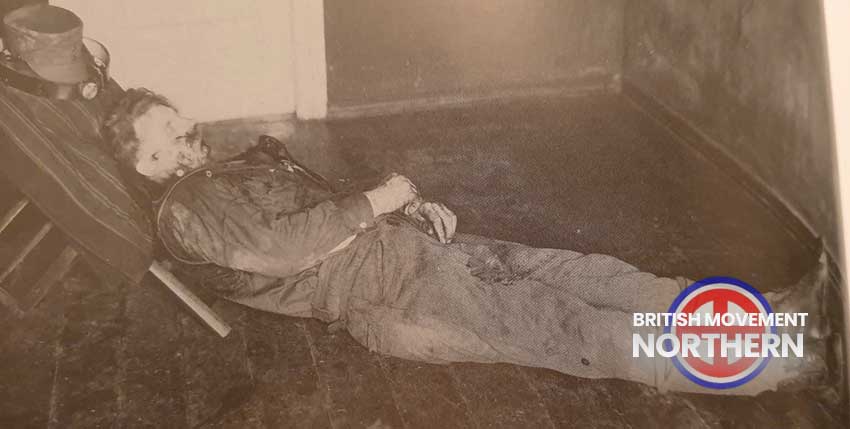
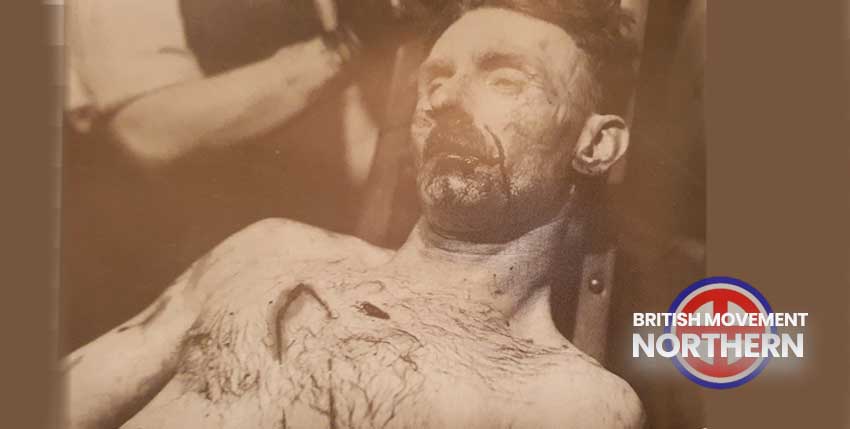
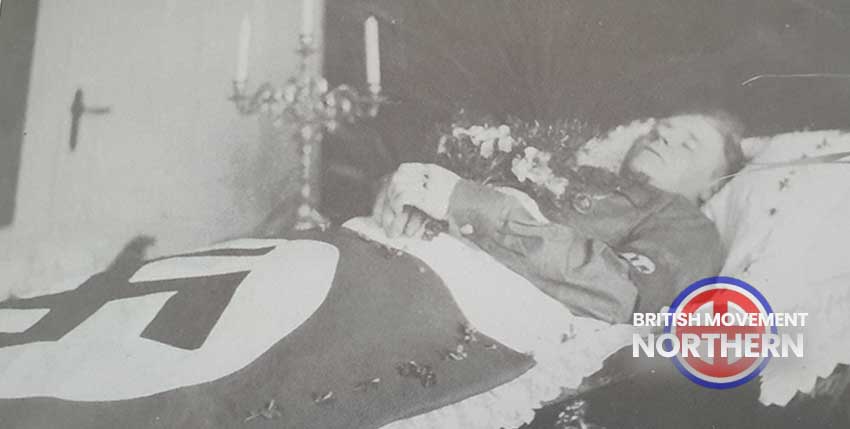
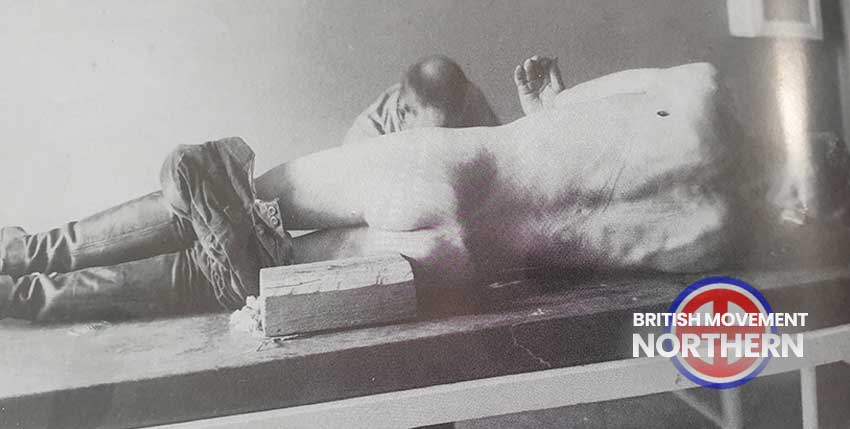
The communist Sturzebecher was a different case, as he was apparently much more violently involved in the confrontation. According to the post-mortem examiner, Dr. Bellguth from Meldorf, the wound of Sturzebecher (from Friedersdorf in Silesia), was only fatal because it was not bandaged in time and the man therefore bled to death. From further testimony and the described nature of the wound, the court deduced that Sturzebecher had stumbled into his own knife.
In the trial, which took place almost a year later in Meldorf, 132 witnesses were questioned and fifteen people were charged with aggravated breach of the peace resulting in death, including only one National Socialist.
The interrogations were difficult because of the political views of the witnesses. For example, National Socialist participants testified that the accused, Christian Heuck, was carrying a pocket knife which he folded up after the altercation. This was confirmed by the communist side in initial statements, but later recanted. Other statements in the trial, which had been incriminating for the communist group, were also repeatedly corrected during the trial, even though they had read differently in the first interrogations.
In this way, an attempt was made by the defence to make a witness seem untrustworthy, even though he was a communist. Their testimonies did not fit into the picture of the red victims that was being painted. One man’s state of mind was questioned because the witness had beaten his wife to death shortly before the trial began.
The left-wing defendants described the clash differently on one fundamental point. The SA march had passed halfway along Lindenstrasse when the rear section stopped to let the communists through. The left-wing group then marched directly between the SA, which immediately began to attack them. Whether such a mistake would have occurred to an experienced and well-trained communist leader like Heuck is questionable.
The trial found that in the case of the two SA deaths, they could not be attributed to a single perpetrator. Communist leader Christian Heuck was sentenced to one year and nine months in prison. Another twelve communists had to serve a total of 64 months in prison. The accused National Socialist was sentenced to two months in prison for self-defence.
Adolf Hitler attended the funeral of the dead National Socialists in person. The impression this gesture made on the population is described as extremely positive. The SA named the SA Storm 3/85 ‘Hermann Schmidt’ and 13/85 ‘Otto Streibel’ after the two dead National Socialists.
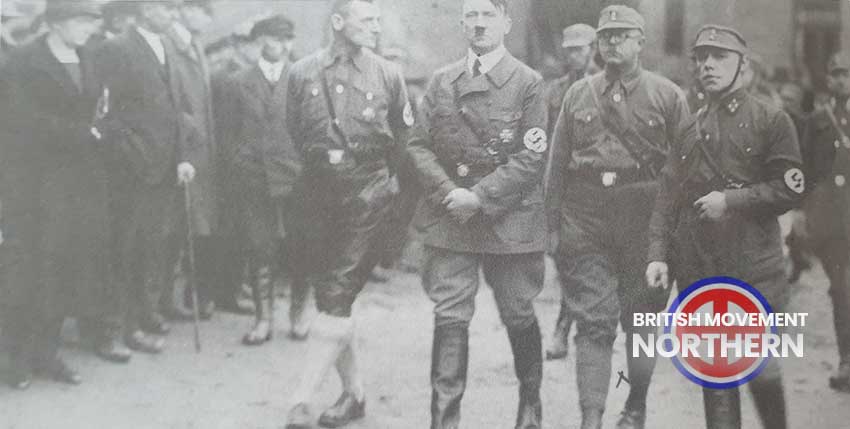
Adolf Hitler travelled to Dithmarschen twice, Joseph Goebbels called the dead: “martyrs for the services of our political work”. After the events, the NSDAP had achieved the political breakthrough in Dithmarschen. Four years before the seizure of power in Germany it became the dominant political force in the region. Street battles took on the status of normality after this incident.
Christian Heuck was a member of the illegal Red Front Fighters’ League and had made a name for himself as a communist leader over a long period. He was allegedly severely maltreated in a prison cell and committed suicide.
An interesting addition to the our report appears on the Wöhrden-Online website. We reprint the report with thanks.
“A bloody street battle ensued in which one Communist and two Storm Troopers were killed. Around 5000 people, including large contingents of SA and NSDAP with party leader Hitler at their head, convened for the funerals of each of the Storm Troopers in Sankt Annen and Albersdorf.
“Pastor Reinhold Schmidt (1873–1942) held the funeral in Albersdorf. He attempted to calm emotions and warned against thirsting for revenge. Hitler, on the other hand, took advantage of the occasion by declaring his killed fellow party members Christian martyrs, thus claiming religious interpretations for his party and himself.
“The police only managed to prevent the funeral from escalating with great effort. The Nazi propaganda pamphlet “Wöhrden’s Bloody Night und Its Consequence”, which once again downright elevated events religiously, appeared a little while later.
“Inspite of the pastor’s vigorous protests, he was incapable of preventing the soar in new memberships in the NSDAP in Albersdorf and environs within just a few days. The community was soon a centre of National Socialism in Holstein.
“Nonetheless, the cult was assiduously maintained. Dithmar farmers agreed to only employ National Socialists on their farms. Albersdorf got an Otto-Streibel-Straße (Mill Street). The Dithmarschers visited by Hitler mounted commemorative plaques on their houses. In 1934 an SA memorial was erected in Wöhrden next to the dairy. The plaques disappeared at the end of the war, and the memorial stone was removed in 1950.
Eye-Witness Testimony from Wöhrden-Online
March. 1929. Germany has over three million unemployed and has a debt of eight billion Reichsmarks. The situation is particularly precarious in Schleswig-Holstein, where the economic crisis is driving the rural population to the barricades.
Violence between National Socialists and Communists occurred for the first time in Dithmarschen. A dozen SA men who were listening to a peasant meeting in the “Dithmarscher Hof” (today “Oldenwöhrden”) were beaten by about 50 communists from Wesselburen, Wöhrden and Meldorf.
Farmer Hans Willy Sierk (89) from Süderholm. 1927 co-founder of Heider SA, was there: “We sat right in front at the counter and the communists in the small hall. Their leader, Christian Heuck from Wesselburen, insulted the speaker and then intoned the Internationale.” The loud chorus rang out: “People, hear the signals”. The SA countered with the Horst Wessel song (“The Flag Raised”) until the Communists attacked them and snatched the flag. The National Socialists fled from the beatings through the kitchen. Some even jumped through a closed window.
After this event, the district administrator forbade an NSDAP meeting planned for March 7, 1929 in Wöhrden. Nevertheless, around 200 National Socialists gather in Wöhrden on this dull Thursday. Instead of a rally, a general meeting will take place at 8 p.m. in the “Handelshof”.
Willy Sierk knows the details: “While backpack major Dinklage was talking inside, we SA men were lined up on the opposite side of the street. Heuck marched past us several times with about 100 communists, with women and children and music.” Despite this challenge, the SA did not move. After the end of the meeting, the storm men, who appeared in civilian clothes, received Rudolf Marohn (worker at the Grünental sewerage works) and Walter Möller (Karolinenkoog) the order to find out inconspicuously whether the communists were still in town. Sierk: “I stood by when they reported: ‘Everything quiet. Nothing to hear and nothing to see.'”
Standard leader Dr. Emil Grantz then decides to fly the flag in Wöhrden: before returning, the Dithmarscher storm troopers are to march through the village. Shortly after 9 p.m., the long train turns from Grosse Strasse into Chausseestrasse (today Meldorfer Strasse). The leaders already have the “Handelshof” in mind when the communist’s approach from Lindenstrasse, a dark side street.
This was observed by the former master baker Willy Will (84) from Linden. He saw what was happening from the house of his grandparents August and Dorothea Keuch off. “Both parties tore slats from the garden fences to arm themselves. Wild cutting and stabbing began.”
Willy Sierk: “We were just singing the Schleswig-Holstein song when I heard a loud shout: Clear the road! Red front! I will never forget those words.” With cabbage knives, steel sticks and brass knuckles, the communists broke into the unarmed SA column from the side. The SA were forbidden by their leadership to carry weapons (this information is confirmed by the court records).
With fists and hastily acquired clubs, the National Socialists tried to defend themselves against blackjacks and daggers. Soon the first injured sink to the ground, covered in blood. The 20-year-old farmer’s son Hermann Schmidt from St. Annen and the 34-year-old carpenter Otto Streibel from Rost are stabbed to death.
“They leaned the dead Streibel directly against our house wall” recalls Minna Hansen (91), who was born in Wöhrden, with a shudder in an interview with DLZ/BZ. The former farmer Gustav Claussen (93) from St. Annen, now Westerdeichstrich, then SA- Member: “A perpetrator first stabbed Schmidt in the kidney with his dagger and then turned around and hit Streibel in the heart.”
And finally….
The National Socialists removed the SA blouses with holes from the dead Streibel and Schmidt and the painter Claussen from St. Annen, who was also severely injured by seven stab wounds. The “blood shirts” were exhibited in the entrance hall of the NSDAP Gauleitung in Kiel.
As the war drew to a close, the long time NSDAP district leader Martin Matthiessen (1901-91), right hand of Gauleiter Lohse, hid the sombre relics in the hayloft of his farm in Meldorf.
In 1978, after much persuasion, Matthiessen handed over the brown shirts, still in a suitcase wrapped in parcel paper, to Dr. Nis Nissen for the Dithmarscher State Museum. “I wanted to show them in 1979 at the special exhibition ‘Die Dithmarscher’ in the district hall,” reports Professor Nissen of the DLZ/BZ Hand. “I didn’t show the shirts then.”
Like his predecessor, the current museum director Dr. Wolf-Dieter Könenkamp is convinced that Nazi objects can also have museum value. Since the opening of the contemporary history department in 1993, the “Blood Shirts” can be discovered in a hidden place in a side room, behind a door that is only half open.
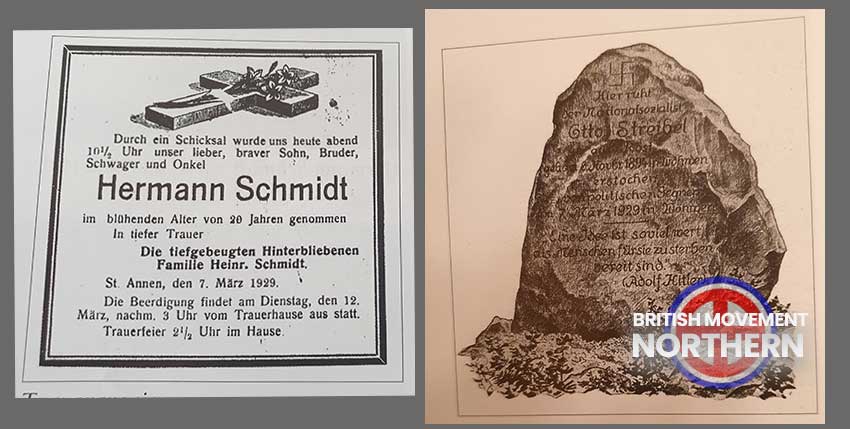
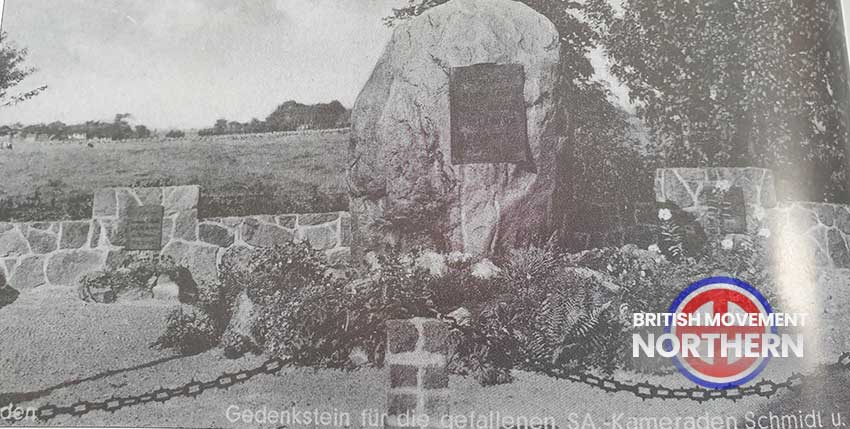
“Only The Forgotten Are Dead”
Resources:
Top Image: British Movement Northern.
The British Movement welcomes articles for possible inclusion on this site from members and supporters across the North of England. Please remember that we have to operate within the laws of this country – we will not include any content that is against the current laws of the United Kingdom. News reports should be topical and be relevant to the regions covered by this website.


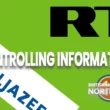
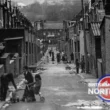
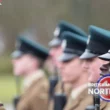
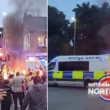
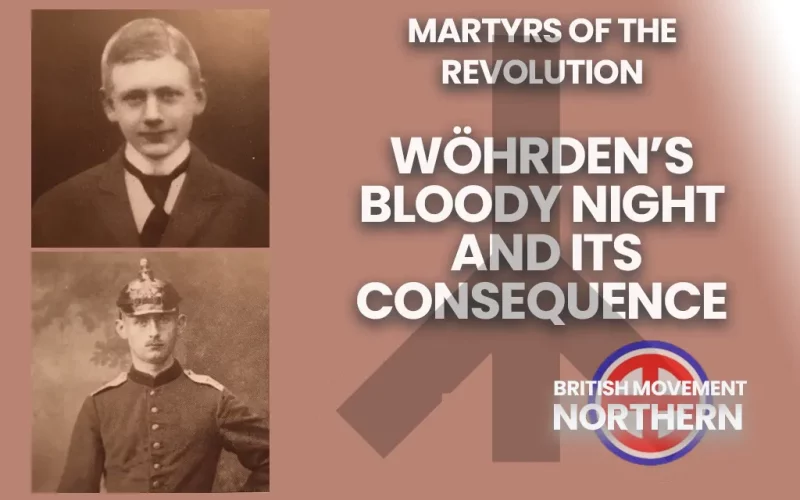
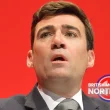
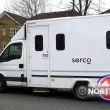
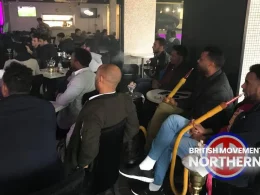
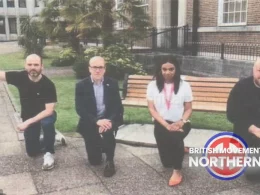

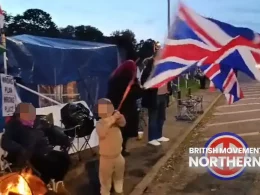
A very interesting and inspiring article. Lest we forget these hero’s of the past.